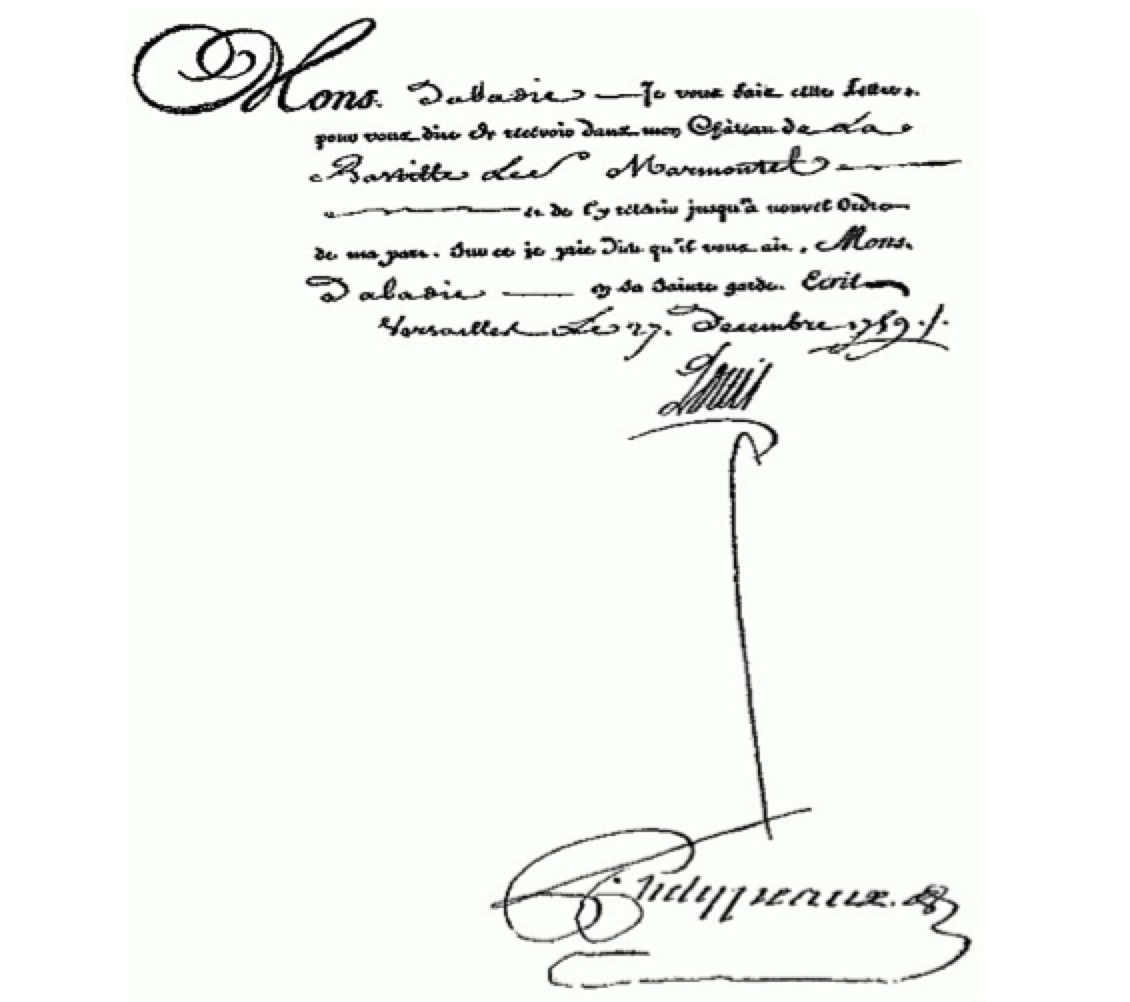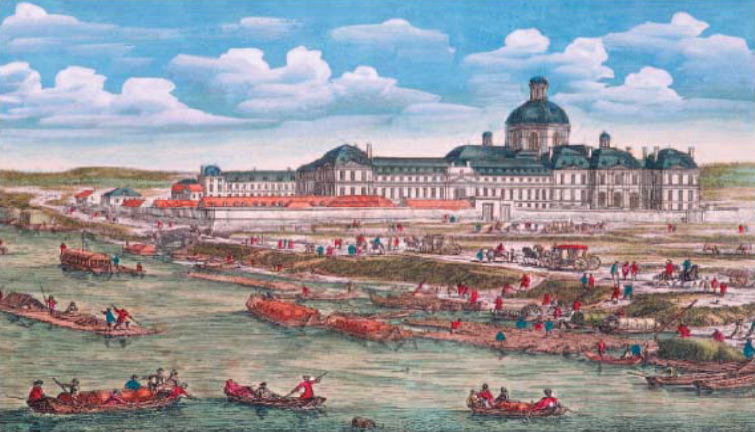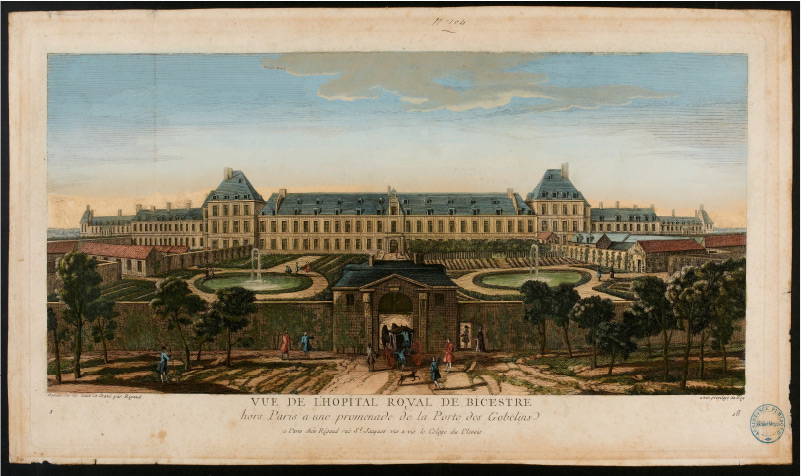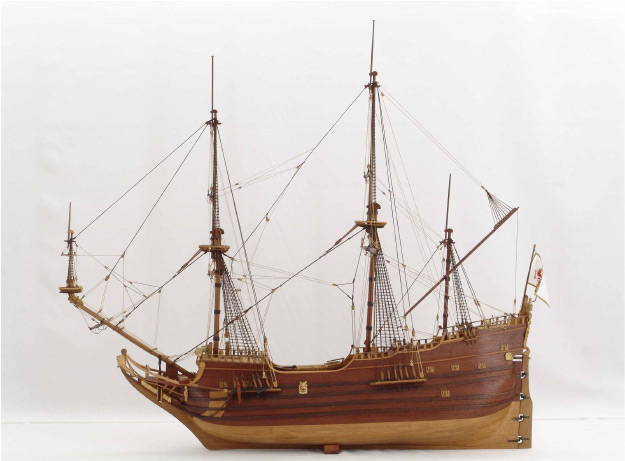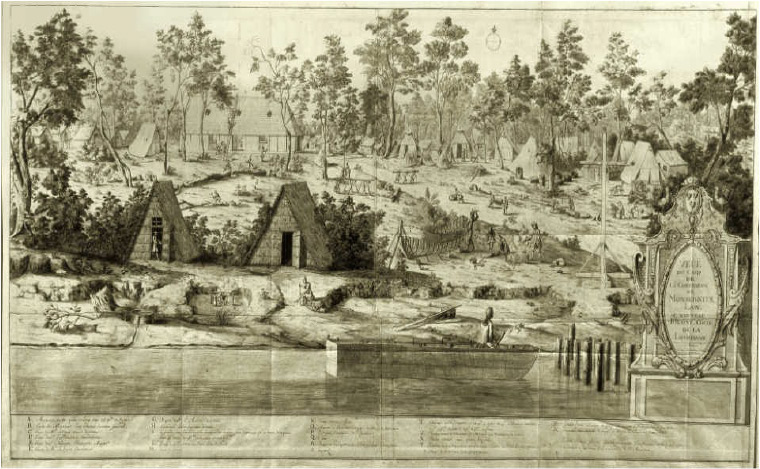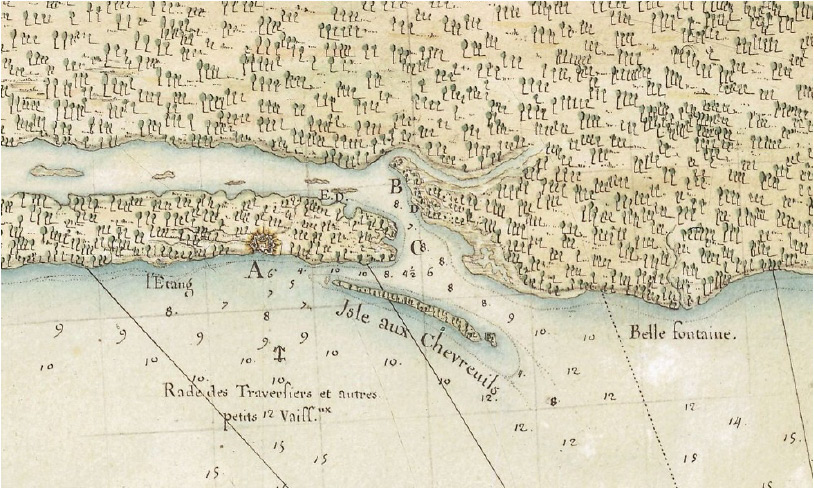History
The King attempts to Impose a New Moral Order
- Louis XIV was the longest reigning French monarch.
- He waged expensive and misguided wars with neighboring countries.
- He revoked the Edict of Nantes, thereby renewing violent conflict between French Catholics and Protestants.
- He depleted the French treasury by building the Palace of Versailles.
- In 1650, at Paris, he created the Hospital General de La Salpetriere for female inmates, and Bicetre prison for males.
- He was motivated, in part, by the belief that God was punishing France for its high level of public immorality and “sin”.
- In 1684, he ordered that “debauched women” would be arrested and incarcerated at La Salpetriere General Hospital in Paris. He issued an edict that any female prostitute caught with his soldiers, within a five mile radius of Versailles, would have her nose and her ears cut off.
Infamous “Debauchees” not detained at La Salpetriere
(These were the King’s mistresses who were debauchees and adulteresses)
- Catherine-Henriette Bellier.
- Marie Angelique de Scorailles
- Catherine Charlotte de Gramont
- Bonne de Pons d’Heudicourt
- Isabelle de Ludres
- Louise de La Valliere
- Anna Maria Mancini
- Francoise-Athenais de Rochechouart
- Claude de Vin des Oeillets
- Anne de Rohan-Chabot
- Olympia Mancini
Forms of punishment for criminals in 17th Century France
- Paying a fine
- Public whipping
- Forced to witness a capital punishment
- Banishment from the jurisdiction
- Exhibition in an iron collar or wooden stocks
- Public branding
- Amputation or splitting of the tongue
- Sentenced as a galley slave
- Execution
Use of Lettres de Catchet
- In France, parents or other relatives could file a claim with the court regarding the misbehavior of a family member (rebellion, sexual activity, stealing, rejection of religion, taking God’s name in vain, etc.) and the lieutenant general de police would ordinarily issue a Lettre de Cachet which was similar to an arrest warrant.
- The targeted person (usually a daughter) would be arrested and incarcerated. The family members could choose to leave her at La Salpetriere and pay a fee for her board, or they could request that their relative be deported to Louisiana, from whence there would be no return to France.
- There was not any legal mechanism for appeal against a lettre de cachet.
Conditions at La Salpetriere Hospital in Paris
- Girls and women were fed a starvation diet – bread, water, and soup.
- They lived in crowded housing – four to five women slept on a lice-ridden straw mattress.
- They lived with poor ventilation, and a hazardous environment.
- They faced mandatory daily attendance at Mass and religious instruction.
- Their daily housework duties included sewing, mending, cleaning, and weaving.
- By 1697, the dormitories at La Salpetriere held 4,000 women and children.
- Women who resisted the required work and prayers, or refused religious conversion, would not pass the test required for release from La Salpetriere.
Four Main Sections of La Salpetriere Hospital in Paris
- La Maison de St. Louis – The section for orphans and young children.
- La Maison de Correction – The section for “debauched women” deemed capable of reforming their lives.
- Le Commun – Section for prostitutes awaiting their court decision.
- La Maison de Force – Section for incorrigible, incurable criminals with life sentences.
Crimes committed by a sample of female inmates sent to La Salpetriere Hospital between 1678 and 1712
- Debauchery and prostitution — 133
- Witchcraft — 27
- Theft — 17
- Protestantism — 13
- Insanity — 12
- Blasphemy and immoral speech — 11
- Vagrancy or begging — 10
- Poisoning and murder — 7
- Counterfeiting money — 3
- Practicing abortions — 2
The treatment of male inmates at Bicetre
- Convicts, like Christian Ladner, were held in this prison while awaiting deportation to Louisiana or other French colonies.
- They were kept in dark dungeons, chained and shackled.
- In the 18th century, male patients from Bicêtre were forcibly married to female patients from La Salpetrière and sent out as couples to populate French colonies in the Americas.
- The hospital’s primary role was to keep beggars and ‘undesirables’ off the streets of Paris.
- In 1792, Bicetre was the very first to test a new execution machine called the Guillotine.
Categories of French Deportees to Louisiana
- Vagabonds
- Prostitutes
- Beggars
- Homosexuals
- Salt smugglers
- Tobacco smugglers
- Debauched women and girls
- Heretics and blasphemers
- Poisoners
- Deserters
- The mentally ill
Convicts sentenced as Galley slaves
- The galleys operated from April to October, out of a large base at Marseilles, France.
- 30% of galley slaves had been convicted of smuggling salt or tobacco.
- Sentences were from three to nine years.
- Each convict was branded on his back with GAL.
- Each man was chained by an ankle to a wooden rowing bench – 24 hours per day, seven days per week.
- There were as many as 250 oarsmen on a galley – each one occupied 25 inches on his wooden bench.
- There were five oarsmen to an oar, which was 39 feet long and weighed 286 lbs.
- Half of the convicts died before completing their sentence. Christian Ladner was saved from this fate due to an oversupply of convicts in 1719.
Selection of the Baleine Brides in 1720
- King Louis XIV died in 1715. In May, 1720, a royal edict prohibited the sending of any more criminals to Louisiana.
- The government in Paris, however, still wanted to grant Governor Bienville’s request for marriageable women in Louisiana.
- Officials at La Salpetriere drew up a list of women and girls selected from La Maison de St. Louis, and La Maison de Corrections. The list included no known prostitutes.
- Cardinal Louis-Antoine de Noailles, Archbishop of Paris and spiritual advisor to La Salpetriere, approved the list of eighty-eight women and girls, the youngest of whom were twelve years old.
- In June of 1720, the group was entrusted to the constabulary guards (local police) for transportation to Paimboeuf for embarkation to “Mississippi”.
- The list of eighty-eight women and girls was lost until 1987, when it was discovered in the French archives and published by Bruce Ardoin.
The Journey from La Salpetriere to Paimboeuf
- The women were transported in livestock carts, standing on a bed of straw. They each had one dress, no coat, and no blankets.
- The journey from La Salpetriere to Paimboeuf was about 300 miles and required eighteen to twenty days travel.
- Most of the trip followed the banks of the Loire River, as far as Nantes.
- They were accompanied (or guarded) by police officers.
- During their journey, the women were fed bread and water and possibly some soup or cheese.
- Because they had volunteered for this trip, the future brides may not have been chained at the waist like other groups of women deported to Louisiana.
Delivery of the 88 girls to the Captain of the LA BALEINE
“We, the undersigned Constabulary guards, acknowledge that the girls named on this document have been entrusted to our care, to be conducted to Paimboeuf, where we will deliver them to the Captain of the flute La Baleine, on which the girls will be embarked, and we are to present to the Company of the Indies evidence of our delivery, along with the acknowledgement by the Captain that the said girls have been received by him.”
Done at Paris, 12 June 1720
Signed: DELAGE, and BETOUZET
Dowry items provided for each Baleine Bride
- Two suits of clothing
- Two skirts with petticoats
- Six laced bodices
- Six chemises
- Six headdresses
- Other necessary accessories
The voyage from France to Louisiana
- The risk of Scurvy was great and resulted in many deaths on ships bound from France to the colony of Louisiana.
- The La Baleine also carried more than 200 other passengers to Biloxi.
- It is likely that some of the brides chose their husband from the crewmen of the La Baleine.
- Cargo ships for the Company of the Indies routinely stopped at Cap Francais, St. Domingue, to load drinking water, wood, and livestock.
- The girls would have been required to sleep on straw in the bottom of La Baleine, along with any cattle taken onboard.
- Sister Gertrude actually pointed loaded pistols at French pirates who boarded La Baleine to stop them from menacing the brides.
- The flute itself was only about eighty feet in length and did not carry cannons, but was usually accompanied by a French Warship.
58 Baleine Brides married at Old Biloxi in 1721
- The Flute La Baleine anchored at Ship Island, Mississippi on January 8th 1721, after a voyage of about ninety days.
- All of the Baleine Brides were handed over to the custody of Governor Bienville.
- They were apparently housed together near the site of old Fort Maurepas, which is in present-day Ocean Springs, Mississippi.
- The first marriage was performed on February 10th, 1721.
- The approval of Sister Gertrude, an official representing La Salpetriere, was required before a girl could marry her chosen groom.
- One of the girls died at Old Biloxi in March of 1721 – possibly from the terrible epidemic which killed many citizens there that Spring.
- The remaining unmarried girls apparently left for New Orleans when the capitol of Louisiana was moved there in 1723.
- For fifteen of the girls, no record has been discovered which would prove that they actually arrived in America.
- As far as we know, none of the 88 girls were ever charged with a crime in America.
Local Descendants of the Baleine Brides
The original list of eighty-eight girls on the La Baleine included these two founding mothers of Mississippi Gulf Coast families:
Marie Angelique Girard (age 22) married Andre Miot.
She is the ancestor of all descendants of the Nicaise and Gollott families in Mississippi. She is also the ancestor of thousands of Gulf Coast residents, including surnames such as Ladner, Ladnier, Cuevas, Saucier, Moran, Bosarge, Dubuisson, Shaw, Seymour, Favre, Dedeaux, Gill, Krohn, Tiblier, Fayard, Martin, Guice, Lizana, La Fontaine, Scarborough, Quave, Cassibry, Greenwell, Swetman, Perez, and countless others.
Marie-Anne Foucault (age 17) married Jacques Claude Dupont.
She is the ancestor of many Jackson County residents, including surnames like Dupont, Krebs, Demouy, Holley, Leflau, Jennings, Hague, and Gautier.
What happened to the 88 girls who arrived at Biloxi on the LA BALEINE in 1721?
- 23 of them married and founded large families in Louisiana
- 3 of them married and founded large families in Mississippi
- 5 of them married and founded large families in Illinois
- 4 of them married and founded large families in Alabama
- 14 of them left no trace in America. They were probably buried at sea or died during the terrible epidemic at Biloxi in the Spring of 1721.
- 2 of them were killed by Indians at Natchez
- 1 of them was buried at Biloxi in March of 1721
- 8 of them left no record of being married or having children
- 28 of them married but left no descendants surviving today
A list of things we want to accomplish
- Create a Mississippi non-profit corporation for the purpose of raising money to build a permanent structure in Ocean Springs or Biloxi, which will house a museum/tourist attraction that will open by January of 2021.
- Elect a board of directors from the pool of direct descendants of the Baleine Brides.
- Publish and sell copies of a book containing the genealogies of those brides who founded large families in Mississippi, Illinois, and Louisiana.
- Maintain access to the family genealogies on a central computer database in the museum.
- Create a short film, which tells the story of the Baleine Brides, to be shown once every hour in the auditorium of the museum.
- Display tableaux in the museum which will illustrate significant places and events in the story, including early maps of Mississippi.
- Display a one-fifth scale model of the flute La Baleine with a cross-sectional view of the ship.
- Display historical artifacts from the period when Biloxi was the capitol of Louisiana.
- Staff a souvenir and gift shop to sell items bearing the copyrighted La Baleine logo.
- Provide a logo pin and certificate of membership to eligible descendants for a fee.
- Organize an annual convention for certified descendants to be held in Biloxi or Ocean Springs, Mississippi.



